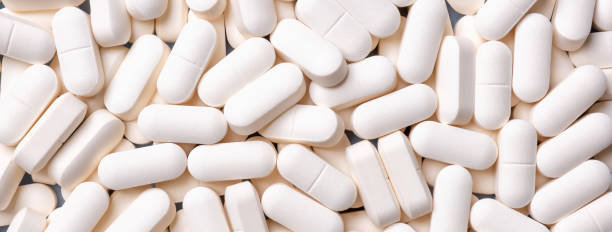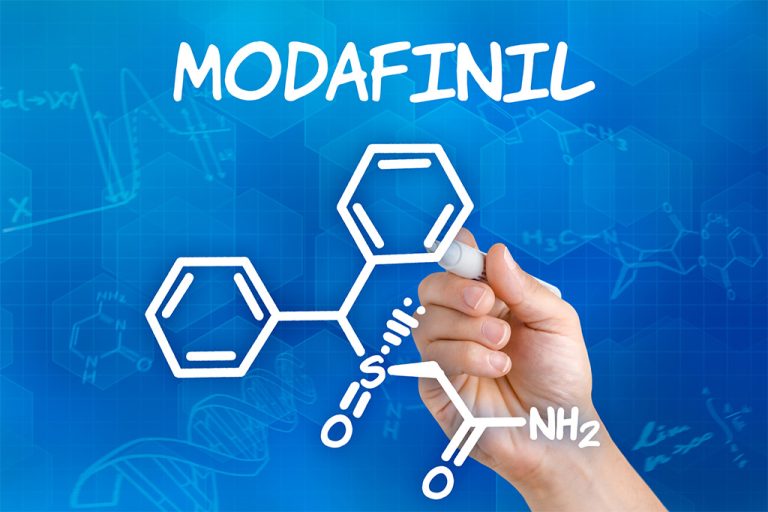What Makes Modafinil a Unique Eugeroic?
Modafinil is widely recognized as a wakefulness-promoting medication, distinct from traditional stimulants such as amphetamines. It is approved by the U.S. Food and Drug Administration (FDA) for the treatment of narcolepsy, obstructive sleep apnea, and shift work disorder, and it has been extensively studied for both medical and off-label uses (U.S. Food and Drug Administration, 2015; Greenblatt & Adams, 2023).
Unlike conventional stimulants, modafinil offers a unique mechanism of action, a relatively low risk of misuse, and therapeutic applications extending into psychiatry and cognitive performance.
Understanding Eugeroics
What Are Eugeroics?
Eugeroics are a class of drugs designed to promote wakefulness and vigilance without the euphoric stimulation typically associated with psychostimulants. The main agents include adrafinil, modafinil, and armodafinil (Urban & Cubała, 2020).
Key features of eugeroics:
- Lower potential for misuse compared with classic stimulants.
- More selective activity in the central nervous system.
- Wakefulness promotion without strong mood or energy elevation.
How Modafinil Works
Mechanism of Action
Modafinil acts through multiple neurochemical pathways, giving it a unique pharmacological profile:
- Dopamine reuptake inhibition: Modafinil weakly inhibits the dopamine transporter, increasing extracellular dopamine (Greenblatt & Adams, 2023).
- Norepinephrine activity: Elevated norepinephrine in the hypothalamus contributes to arousal.
- Serotonin modulation: Indirect increases in serotonin have been observed, particularly in the amygdala and prefrontal cortex (Urban & Cubała, 2020).
- Histamine & orexin pathways: Increased histamine and orexin activity support sustained wakefulness (Greenblatt & Adams, 2023).
- Glutamate & GABA effects: Modafinil enhances glutamatergic signaling and reduces GABA activity, further promoting alertness (Battleday & Brem, 2015).
This multi-pathway mechanism differentiates modafinil from amphetamines, which primarily stimulate catecholamine release.
Clinical Uses
Approved Indications
According to the FDA label, modafinil is indicated for:
- Narcolepsy: Reduces excessive daytime sleepiness.
- Obstructive Sleep Apnea (OSA): Used as an adjunct to continuous positive airway pressure (CPAP) therapy.
- Shift Work Disorder: Improves alertness in patients with nighttime or rotating schedules (U.S. Food and Drug Administration, 2015).
Off-Label Applications
Research suggests additional uses for modafinil, though these remain off-label:
- Depression-related fatigue and cognitive impairment (Urban & Cubała, 2020).
- Bipolar depression, particularly in drug-resistant cases (Urban & Cubała, 2020).
- Cancer-related fatigue with some evidence of symptom improvement (Greenblatt & Adams, 2023).
- Multiple sclerosis-related fatigue (Greenblatt & Adams, 2023).
- Atypical and seasonal depression (Urban & Cubała, 2020).
Modafinil as a Cognitive Enhancer
Evidence in Healthy Adults
The popularity of modafinil among students and professionals has spurred research into its potential as a cognitive enhancer. Evidence suggests:
- Executive function: Consistent improvements in tasks requiring planning, problem-solving, and adaptability.
- Attention and memory: mixed results, with some studies showing improvements and others finding no effect.
- Creativity: Possible impairments in divergent thinking tasks (Battleday & Brem, 2015).
Overall, modafinil appears most effective for complex cognitive tasks, particularly in individuals with lower baseline performance (Battleday & Brem, 2015).
Safety and Tolerability
Common Side Effects
- Headache
- Nausea
- Insomnia
- Dizziness
- Diarrhea (Greenblatt & Adams, 2023; U.S. Food and Drug Administration, 2015)
Rare but Serious Reactions
- Stevens–Johnson syndrome (SJS)
- Toxic epidermal necrolysis (TEN)
- Drug reaction with eosinophilia and systemic symptoms (DRESS) (U.S. Food and Drug Administration, 2015)
Addiction and Misuse Potential
- Modafinil has a lower abuse potential than amphetamines, though cases of misuse and dependence have been reported (Greenblatt & Adams, 2023).
- Classified as a Schedule IV controlled substance in the U.S. (U.S. Food and Drug Administration, 2015).
Drug Interactions
- Decreases efficacy of oral contraceptives and cyclosporine.
- May alter blood levels of antidepressants, anticoagulants, and anticonvulsants (Urban & Cubała, 2020).
Why Modafinil Stands Out
Modafinil distinguishes itself among eugeroics for several reasons:
- Mechanistic breadth: Targets multiple neurotransmitter systems for sustained wakefulness.
- Safety profile: Generally well-tolerated, with relatively low addiction risk.
- Versatility: Effective in both sleep disorders and fatigue-related psychiatric conditions.
- Cognitive effects: Potential for improving executive function, though not a universal enhancer.
Conclusion
Modafinil has established itself as a unique agent in sleep medicine and beyond. Its combination of wakefulness-promoting efficacy, multi-system pharmacology, and relatively low risk of misuse make it a cornerstone among eugeroics. While its role as a cognitive enhancer remains debated, modafinil’s clinical and off-label applications continue to expand, underscoring its versatility and importance in modern therapeutics.
References
- U.S. Food and Drug Administration. (2015). PROVIGIL® (modafinil) tablets, for oral use, C-IV [Prescribing information]. U.S. Department of Health and Human Services. https://www.accessdata.fda.gov/drugsatfda_docs/label/2015/020717s037s038lbl.pdf
- Greenblatt, K., & Adams, N. (2023). Modafinil. In StatPearls [Internet]. StatPearls Publishing. https://www.ncbi.nlm.nih.gov/books/NBK531476/
- Urban, A. E., & Cubała, W. J. (2020). The role of eugeroics in the treatment of affective disorders. Psychiatria Polska, 54(1), 21–33. https://doi.org/10.12740/PP/OnlineFirst/90687
- Battleday, R. M., & Brem, A. K. (2015). Modafinil for cognitive neuroenhancement in healthy non-sleep-deprived subjects: A systematic review. European Neuropsychopharmacology, 25(11), 1865–1881. https://doi.org/10.1016/j.euroneuro.2015.07.028








